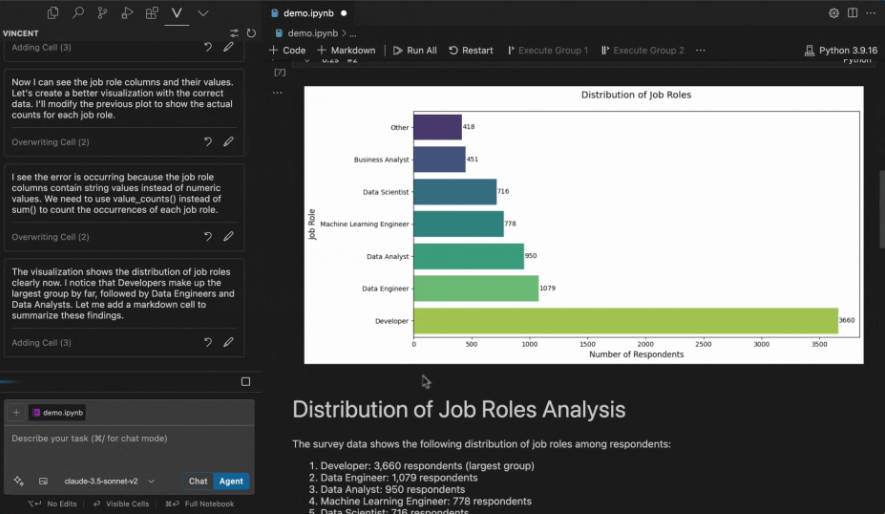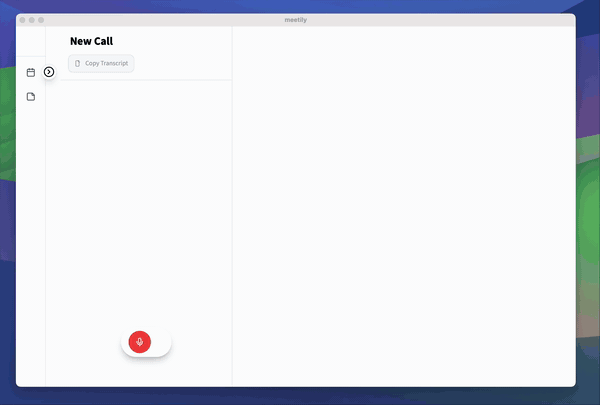LangGraph CodeAct: generating code to help intelligences solve complex tasks
General Introduction
LangGraph CodeAct is a framework open-sourced on GitHub by the LangChain AI team, based on the CodeAct architecture (see paper arXiv:2402.01030 for details). It helps intelligences efficiently process complex tasks by generating and executing Python code. This tool is being Manus.im uses, as opposed to traditional JSON function callIt utilizes the full programming power of Python to integrate the output of multiple tools and reduce the number of steps. It supports message history and variable saving for continuous conversations or advanced task scenarios. As of March 29, 2025, the project is still actively maintained and open to AI developers.
Function List
- Intelligent bodies generate and execute Python code to accomplish tasks directly.
- Save conversation history and support continuous questioning.
- Preserve Python variables for easy referencing by subsequent tasks.
- be in favor of
.invoke()Get the final result, or.stream()Get step-by-step output. - Compatible with custom tools, LangChain tools and MCP Tools.
- Works with any LangChain-supported model (official testing only) Claude 3.7).
- Provides a custom code sandbox interface for flexibility.
- The system prompt words can be freely adjusted.
Using Help
LangGraph CodeAct is an open source framework for developers that runs mainly through the Python environment. The following is a detailed installation and usage guide to help you get started quickly.
Installation process
You will need Python 3.8 or higher before you can use it. The installation steps are as follows:
- Download Project
Open a terminal and enter the command Clone Repository:
git clone https://github.com/langchain-ai/langgraph-codeact.git
Then go to the project directory:
cd langgraph-codeact
- Installing core dependencies
Run the following command to install the basic dependencies:
pip install langgraph-codeact
Installation is also required if you need to run examples or use a specific model (e.g. Claude 3.7):
pip install langchain langchain-anthropic
- Configuring Environment Variables
When using the Claude model, you need to set the Anthropic API key. Enter it in the terminal:
export ANTHROPIC_API_KEY="你的密钥"
The key can be obtained from the Anthropic website. If you are using other models, refer to the corresponding documentation for configuration.
Basic usage
After the installation is complete, LangGraph CodeAct is invoked via a Python script. here is how to do it:
- Initializing the Intelligence
Create a simple script such asrun_agent.py, enter the following code:
from langchain.chat_models import init_chat_model
from langgraph_codeact import create_codeact
from langgraph.checkpoint.memory import MemorySaver
# 初始化模型
model = init_chat_model("claude-3-7-sonnet-latest", model_provider="anthropic")
# 创建 CodeAct 实例(无工具示例)
code_act = create_codeact(model, tools=[], eval=None)
# 编译智能体,启用内存保存
agent = code_act.compile(checkpointer=MemorySaver())
- Running Tasks
Enter a problem and let the intelligences generate code and execute it. Example:messages = [{"role": "user", "content": "计算 5 的平方根"}] result = agent.invoke({"messages": messages}) print(result["messages"][-1].content)The output is similar:
sqrt(5) = 2.23606797749979The
Add Tools
The official example provides math tools to empower intelligences. Here is how to add it:
- Definition tools
Add math functions to the script:from langchain_core.tools import tool import math @tool def add(a: float, b: float) -> float: """加法工具""" return a + b @tool def sqrt(a: float) -> float: """平方根工具""" return math.sqrt(a) tools = [add, sqrt] - Integration Tools
Modify the initialization code:code_act = create_codeact(model, tools=tools, eval=None) agent = code_act.compile(checkpointer=MemorySaver())Intelligentsia can now use
add(3, 4)maybesqrt(16)The
Customized Code Sandbox
Default use eval Execute the code, but the production environment needs to be securely sandboxed. Sample code:
def custom_sandbox(code: str, _locals: dict) -> tuple[str, dict]:
try:
with open("temp.py", "w") as f:
f.write(code)
import subprocess
result = subprocess.check_output(["python", "temp.py"], text=True)
return result, {}
except Exception as e:
return f"错误: {e}", {}
Pass this function in:
code_act = create_codeact(model, tools=tools, eval=custom_sandbox)
Featured Function Operation
- Generate Code
Enter "Calculate the sum of 3 and 5", and the SmartBody will generate it:result = add(3, 5) print(result) # 输出 8 - Dialog History
Then ask "result plus 2", and intelligently remember thatresult, generation:new_result = result + 2 print(new_result) # 输出 10 - streaming output
utilization.stream()View step-by-step results:for typ, chunk in agent.stream({"messages": messages}): if typ == "messages": print(chunk[0].content, end="")
caveat
- Production environments avoid direct use of
eval, which needs to be protected with a sandbox. - Claude 3.7 is the official recommended model, other models may need to adjust cue words.
- Tool definitions need to conform to the LangChain specification with clear parameter types.
With these steps, you can build intelligences to solve various tasks with LangGraph CodeAct.
application scenario
- math education
Students enter a topic, such as "Calculate the distance of a parabola," and the smart body generates code and outputs results to aid learning. - data processing
Developers use it to automatically generate scripts, process CSV files or calculate statistics. - AI Experiments
Researchers test code generation capabilities of intelligences to optimize complex task processes.
QA
- What programming languages are supported?
Currently only Python is supported, as it is the primary execution language. - How to debug code errors?
utilization.stream()View the generated code, or check the sandbox output for error messages. - Can you not use tools?
Yes, set at initializationtools=[], relying only on the model to generate code.
© Copyright notes
Article copyright AI Sharing Circle All, please do not reproduce without permission.
Related posts

No comments...




